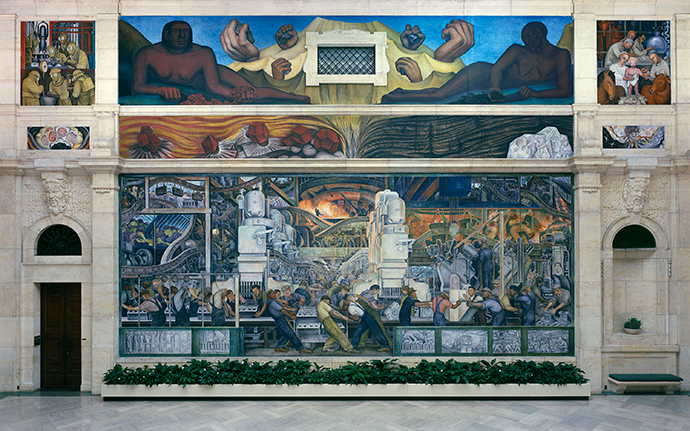
If you’ve seen the 2013 Oscar-winning documentary “Searching for Sugar Man,” you know the story of Sixto Rodriguez, the Detroit folksinger whose descent into obscurity in the US contrasted with his near-mythical popularity in South Africa among those seething to rebel against apartheid — a fame he wasn’t even aware he had until the filmmakers came along to piece it together.
Detroit is a major character in that story. You learn about the club scene in the same Cass Corridor section of the city that gave birth to the White Stripes, MC5 and Iggy Pop, among others. And you see stark scenes of the present day, as Rodriguez leans into the bleak and desolate streetscape of boarded-up houses and dirty snowdrifts, the wind blowing the musician’s skinny frame to even thinner proportions.
How will this city rediscover its fame? And when will the innovation it’s known for worldwide circle back to rescue a city so far down for so long (to paraphrase another folkie, Richard Farina), it looks like up to me?
The excavation is taking place already. Bars on the windows not that long ago are giving way to picture windows at blocks of redeveloped mixed-use property, looking out on streetscapes that include new stadiums, growing employers and, best of all, people.
Land, Lots of Land
Grow the population. Create jobs.
That’s the mission of Jed Howbert, deputy director of the Jobs and Economy Team in Detroit Mayor Mike Duggan’s office. The job description for the native Michigander and former corporate attorney who just moved back to his home state after working as a senior policy advisor to Mayor Michael Bloomberg in New York includes land use and real estate development, business attraction and retention programs, small business and entrepreneurial promotion, and transportation and logistics.
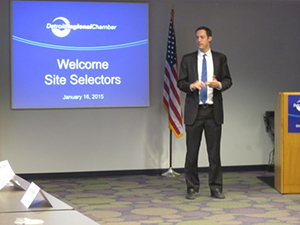
In addition to formerly running the real estate platform at Tishman Speyer, Howbert was vice president of the Urban Investment Group at Goldman Sachs. And in addition to overseeing the planning department and the newly created housing and revitalization department for the city, his team is exploring non-traditional development of open space for sectors such as utility-scale renewable energy generation and large-scale urban farming.
Detroit may be undergoing a rebirth, you see, but it’s piecemeal thus far, and there’s a long road ahead. Then again, fenced empty lots and derelict buildings are also a clean-slate portfolio of sorts. How big a portfolio?
In terms of land, “We believe if the tax foreclosure rate proceeds the way they have been, the city will own half the land in the city,” Howbert said in a brief talk in January to group of visiting site selection consultants. The city stretches for 139 square miles, he explained, so that means somewhere around 65 to 70 sq. miles, up from the current 50 square miles the city controls.
Howbert’s team is putting together statutory tools and financing tools to help people finance projects on such parcels.
“It’s an enormous challenge and opportunity,” he says, noting the pioneering developers and partners who have put skin in the game and partnered with each other to redevelop blocks here and there. “If you get a team of capable real estate professionals to augment the soldiers fighting this fight, there are things you can do here that no other city can do. It’s why I came back and why it’s exciting.”
Not Waiting
Redevelopment of property starts with redevelopment of the city administration, still reeling from years of mismanagement and corruption. Support is coming from a multitude of organizations, including the Detroit Regional Chamber, Michigan Economic Development Corp. and the Detroit Economic Growth Corp., now being led by CEO Rodrick Miller, the founding president and CEO of the New Orleans Business Alliance who was lured north last year. He, like many re-energized leaders in the region, saw the challenge and the promise of an area truly on the upswing.
n January the American Lightweight Materials Manufacturing Innovation Institute (ALMMII) opened its new $148-million innovation acceleration center in a redeveloped auto plastics facility formerly owned by Mexican Industries (inset, before renovation). At the ribbon-cutting, a new program name was announced: LIFT — Lightweight Innovations for Tomorrow.
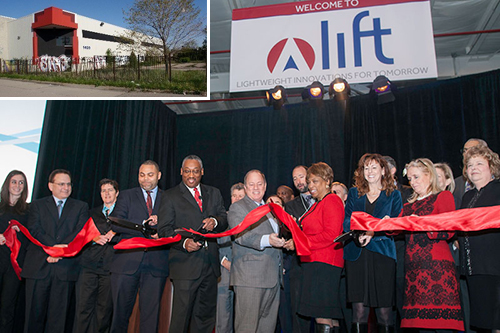
The operation, helped by $1 million in funds from the Michigan Community Revitalization Program (MCRP) that were obtained by PM Environmental, is one of five institutes so far that constitute the National Network for Manufacturing Innovation overseen by the US Dept. of Commerce.
“I don’t think anyone will be surprised that there is a lot to work on,” says Howbert, “big-ticket stuff that is not functioning as it should. You had large teams working in real estate development that were essentially reduced to nil. We need a team of top-flight professionals to take parcels and get them into private hands — there was maybe one person in city government capable of doing that. We did not have the bodies to throw at the deals to make them happen.”
Some of the industrial deals are happening anyway. RACER Trust announced in January it had sold 25 acres in Detroit to General Development Company and Friedman Integrated Real Estate Solutions, which are working on behalf of a major manufacturer to develop a logistics center, to be called Clark Street Technology Park, that will employ an estimated 228 people.
“We’re very pleased that General Development and Friedman Integrated Real
Estate Solutions chose this location and excited about the opportunities it will
create for the people of Detroit and surrounding communities,” said Elliott P.
Laws, of EPLET, LLC, administrative trustee of RACER Trust.
Construction is expected to begin shortly and take eight months to complete.
“To have a major industrial user make this sort of commitment is another positive sign of Detroit’s comeback and indicative of strong optimism for a continued robust recovery,” said Bruce Brickman, co-owner of General Development.
Clean House
As part of the process of emerging from bankruptcy, the city’s clean-slate approach applies to the team too: Major departments — such as a non-centralized finance organization, HR and IT — were granted the right to reorganize, rewrite job classifications and re-interview everyone on staff by the emergency manager. Howbert doesn’t mince words: There were plenty of people in positions “who should not have these jobs.”
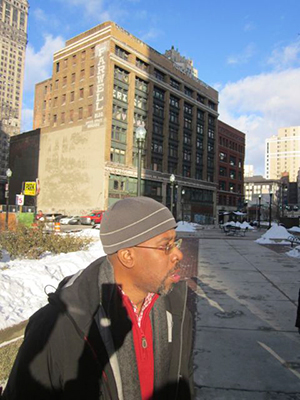
Each department’s business case is presented to the city’s chief financial officer for review. Then real progress can unfold, including the likelihood of a necklace of industrial and business parks emerging from an expected new parcel assembly and RFP process.
“We have the authority to create a cadre of really talented professionals,” says Howbert, “and can deploy our land and create economic development. Practically speaking, we’ll end up with more dollars allocated to high priority projects, and more effective staff. From a real estate perspective, we get better at our job of assembling, marketing and selling parcels. We own enormous tracts, we do a terrible job, and we’re going to change that.”
Change is afoot throughout the city’s government. Every Wednesday morning, says Howbert, senior city department officials get together with the mayor to go over service delivery, from streets and sanitation to ambulance service, which had a response time of 20 minutes when Duggan came into office when the national average was six minutes.
“Every week we give our numbers,” Howbert says. “Several months ago, they were having trouble breaking through the 12-minute barrier. [Mayor Duggan] wanted a date. They said November. He asked then. It was still over 12 minutes … and he introduced a new head of the ambulance service.
“We have to grind through it, and answers will not be overnight,” says Howbert, “but there will be a critical increase in the capacity to deal.” In a sense, it’s a matter of leaving behind an overweening focus on master-plan documents and getting out on the street to do things like ensure smooth land assembly and cleaning up access roads.
An example? Last year the city changed out 30,000 streetlights, after changing out just 500 the year before. “2014 was a little bit busy,” quips Howbert of his first seven months on the job, “and somehow I imagine 2015 will be too.”
Infill is In Style
Even with such judgment calls being made, it’s still not a snap of the fingers when it comes to property redevelopment. In some cases a master developer may be the best approach, he says, while other parcels will be developed by the city itself.
“The I-94 Industrial Park has been going on for 20 years,” says Howbert, “which is only 19 years too long. You’ll see us choosing over the coming year a series of connected targets — not just downtown, but in key neighborhood centers. The ultimate goal is the broadest economic impact for the city. Look at the momentum you get from getting projects underway. Downtown, where rents on residential buildings are exceeding $2 a square foot now, we’ll see those increasing. Now is the time to start pushing supply.”
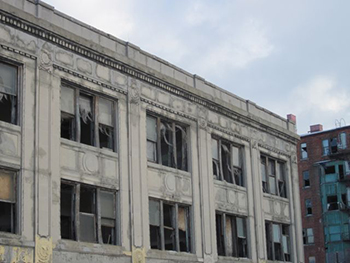
Indeed, multifamily housing is a major focus now, as downtown occupancy has grown to around 95 percent. James Arthur Jemison, the former deputy secretary of housing for the Commonwealth of Massachusetts, has come in as the city’s new housing and revitalization agency.
Examples sprinkled throughout the city include Capitol Park, where just a few years ago drug trafficking was heavy and a nearby abandoned building with illegally connected water and power was being used as a brothel.
“Capitol Park represents one of the more dramatic success stories,” says Richard Hosey III, a partner in the Capitol Park Partnership. He says the commitment it took from the city, Wayne County and the state stands in direct contrast to the redevelopment of the Westin Book Cadillac building nearby, which took 22 layers of financing.
“In 2008, we started working on a real solution,” Posey says. “At that time I was a national banker. By mid-2009 we were convinced it could be done. The parties decided to buy a critical mass of buildings where this park is, in hopes to reduce the crime.”
Today a total of $130 million in development is in play, involving redevelopment of 11 buildings and 400 forthcoming apartments overall.
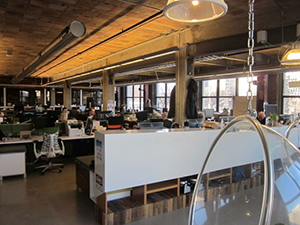

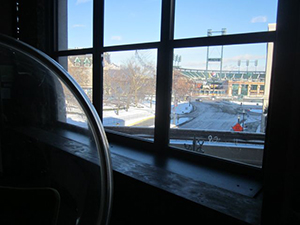
Not far away, Midtown continues to surge. Whole Foods already has committed to a second downtown Detroit store after its first store in Midtown proved too small almost immediately. A 50-block area known as the Catalyst Development Project, owned by Olympia Development working in concert with the Detroit Downtown Development Authority, is anchored by a forthcoming $650-million new hockey arena for the NHL’s Detroit Red Wings. And another 300 acres in the city’s East Riverfront District are ready for rehab, remediation in some cases, and resuscitation.
“I think it’s real,” says Kevin Kerrigan, the new senior advisor, automotive initiatives, for the State of Michigan, of the city’s resurgence. “Detroit suffered with many, many years of bad management, and accumulated a lot of debt. The bankruptcy took that away, and it’s now in the black. There is a lot of excitement from businesses I talk to, as a lot of young people want to live in the city — for us to have a true automotive industry in Michigan, it’s important for a lot of young people to have a vibrant city. Is there work to do? Yes. But the hard lifting has been done, and I think the governor [Rick Snyder] should get a lot of credit for that. Mayor Duggan and he are working very well together. It’s great to see that.”
In December the city welcomed another $50 million in federal funding to continue its blight elimination. The money will be used to demolish another 3,300 structures in addition to the 3,700 demolished in 2014 with $57 million in federal funds. The city expects to average 200 demolitions a week.
“Residents of Detroit have seen a major difference already with the first round of anti-blight funding,” said Mayor Duggan in December. With the additional funds and an expansion of the zone in which they can be used, he said, “we will be able to improve the quality of life of thousands more Detroiters, right in the neighborhoods where they live.”
To cite another song, from the late Gil Scott-Heron, we may have almost lost Detroit last night. But it’s being found again, one block at a time.
This is the first in a series of stories about the re-emergence of Southeast Michigan as a global economic force. Watch for future stories about foreign (Chinese) direct investment in Michigan, and how a focus on workforce and talent is resuscitating a lot more than the automotive industry.
